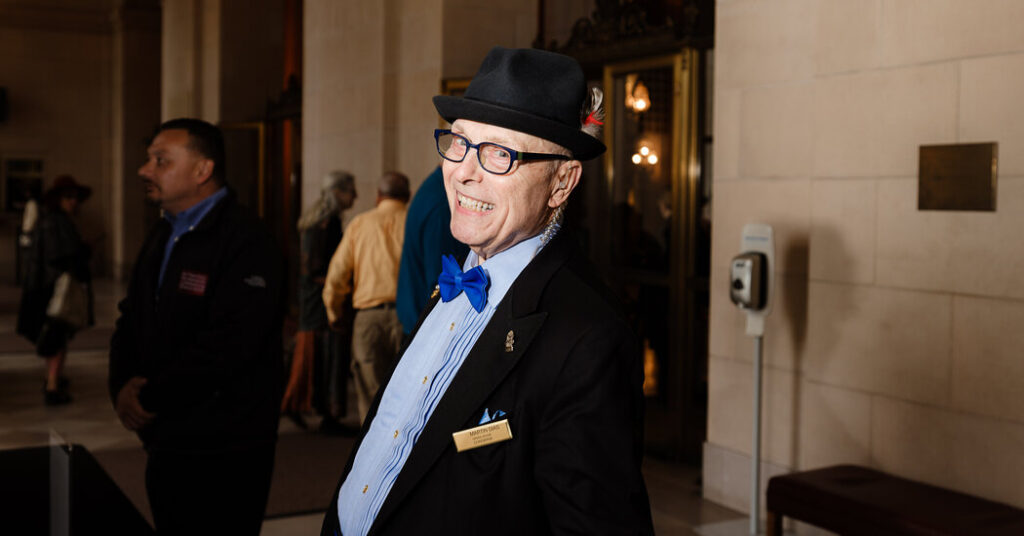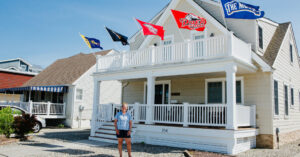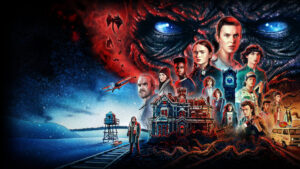San Francisco’s Arts Institutions Are Slowly Building Back

On a recent clear day, visitors were wandering through the San Francisco Museum of Modern Art to gawk at works by Yayoi Kusama and Alexander Calder, and, a few blocks away, making their way through the galleries at the Contemporary Jewish Museum and the Museum of the African Diaspora.
That evening, music lovers poured in to Davies Symphony Hall to hear Esa-Pekka Salonen conduct the San Francisco Symphony and into the War Memorial Opera House across the street, where the San Francisco Opera was giving the American premiere of Kaija Saariaho’s “Innocence.”
Although attendance at the city’s arts institutions remains down from prepandemic levels — with tourism, hotel occupancy and office attendance yet to fully recover — its cultural ecosystem has been showing signs of inching its way back.
Arts organizations around the nation have been struggling to regain audiences since the pandemic, with Broadway attendance about 17 percent lower than before and precipitous declines at many regional theaters, museums, orchestras and opera companies.
San Francisco has its own particular challenges: People are returning to work, but the city’s office buildings remain emptier than those in Los Angeles or New York. Fewer people are taking Bay Area Rapid Transit downtown; the number of riders exiting at downtown stations is still down by more than half since 2019.
The city and its cultural organizations have been struggling to overcome what Thomas P. Campbell, director of the Fine Arts Museums of San Francisco, referred to as the “doom narrative,” the widespread media coverage of the city’s challenges, both real and exaggerated.
“San Francisco is the 17th-largest city in the country, but we have a symphony, a ballet, an opera and museums that are all in the top tier,” Campbell said. “No one is celebrating that and no one is banging the drum about that, and yet people want to live here because of art and culture and the beautiful landscape and the food and wine.
“Yes, there are real problems here,” he added as he walked through the de Young Museum, “but the city’s gone through booms and busts before and it continues to be this amazing city.”
The arts recovery has been uneven.
At the Fine Arts Museums, which comprises the de Young in Golden Gate Park and the Legion of Honor in Lincoln Park, the total number of visitors has been slightly exceeding prepandemic levels: 1,344,866 in 2023, up from 1,344,431 in 2019.
But at the modern art museum, SFMOMA, attendance declined to about 580,000 in the last fiscal year from nearly 892,000 in 2019. Some think that the museum’s location in the SoMA district — where the challenges of homelessness, emptier office buildings and reduced foot traffic have taken a toll — played a role in the decline.
“Clearly the downtown location has been problematic,” said Robert J. Fisher, SFMOMA’s chairman, who has served on the board since 1990. “Between the publicity and work-from-home problems, those add up together to make downtown feel pretty quiet, but it’s hardly a ghost town.”
The museum has hopes that the right exhibitions will bring people back. It is mounting a major survey of Amy Sherald, opened a site-specific installation by Kara Walker this month and recently announced that it had acquired one of Kusama’s Instagram-friendly “infinity” rooms, which it will keep open until January.
“We’ve got to get people in the door,” Fisher said, “and then we have to get them to tell their friends and tell their friends.”
Audiences have been returning over the past several years, but are still short of prepandemic levels at many organizations. Some are giving fewer performances.
The San Francisco Opera closed its 2023-24 season with 116,719 tickets sold, down from 128,437 in the last full season before the pandemic. The San Francisco Symphony is projecting sales of 283,500 tickets for this season, down from 354,833 the last season before the pandemic, when it gave 26 more concerts. And the San Francisco Ballet sold about 208,000 tickets this season, down from 212,000 tickets before the pandemic, but with three less performances in a 3,100-seat house.
Theater attendance is down too. The American Conservatory Theater’s audience has dropped to 130,000 from 161,000, as it reduced its number of productions to six from nine.
Many institutions are facing financial difficulties. The San Francisco Symphony has imposed a series of budget cuts — canceling a planned tour, limiting commissions of new music and doing fewer semi-staged productions — that prompted Salonen, its acclaimed music director, to announce he would step down when his contract is up after next season. And the San Francisco Opera announced that next season it would mount only six productions; it usually stages at least eight.
Some arts groups believe that the city should be doing more to support cultural institutions as they continue to recover from the pandemic. But city officials point to several efforts. Mayor London Breed’s new budget includes a $15 million investment to expand the city’s efforts at revitalizing arts and culture, hospitality, entertainment, retail and tourism areas in the districts of Union Square and Yerba Buena.
“We’re investing the resources, we’re making it easier for people to allow for fun and nightlife and culture and excitement,” said Breed, who formerly served as the executive director of the African American Art & Culture Complex. “I have always prioritized art and protected arts funding.”
Various city programs are trying to bring people back downtown, such as Vacant to Vibrant, which creates opportunities for small businesses, artists and cultural organizations to create pop-ups in vacant storefronts. Last month, San Francisco announced the creation of entertainment zones where drinks will be allowed outdoors, in an effort to draw more people to downtown areas.
“It will bring folks into areas where the arts organizations reside and encourage people to come to those locations,” said Ralph Remington, the new director of cultural affairs for the San Francisco Arts Commission.
Although the doom narrative has been daunting, some say it has also united the city in its efforts to tell a different story.
“It’s helping us boost some of our initiatives because that’s a thing we need to fight,” said Sarah Dennis Phillips, the executive director of the Office of Economic and Workforce Development. “We need to make downtown San Francisco a place where people want to be, not a place they have to be. Arts and culture is a big part of that.”
Arts organizations are trying different methods to build back local audiences and tourists. SFMOMA is leaning into crowd-pleasing shows such as the music-themed “Art of Noise” and a sports-related exhibition, “Get in the Game,” that opens in the fall.
“I think we can do the adventuresome things, just as we can do the revenue-generating things,” Christopher Bedford, the museum’s director, said during a recent walk through the galleries. “And I want to imagine a world in which they’re basically the same.”
At the same time, the museum will remain true to its core mission, Bedford said. He cited the new installation by Walker, calling her “the most important American artist working today, who forces us with every gesture to reckon with our history as a nation.”
san-franciscos-arts-institutions-are-slowly-building-back






